Buyer: How do I create and issue Client Authorizations?
What is a Client Authorization?
Within DOmedia, a Client Authorization is a digital document that outlines the specific details of a campaign and is generated from one or multiple RFP responses. The Client Authorization is intended to be sent to your client for final approval before contracting those units with vendors. The authorization can be customized to show your client exactly what you would like them to see regarding the details of the campaign.
How do I create and issue Client Authorization?
Client Authorizations are only able to be created from RFPs, meaning that you will first need to send out an RFP to vendors and wait for responses, or create a Buyer-Only RFP and fill in the necessary information on your own. Once an RFP (or multiple RFPs) has been created, below are the various ways you can create a Client Authorization.
Click RFP in the menu on the left side, followed by Client Authorization.
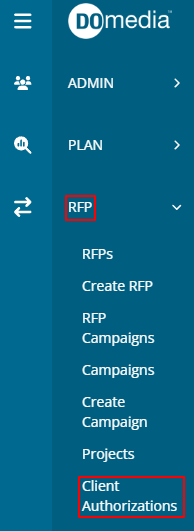
Once you're at the Client Authorization Dashboard, click Create New Client Authorization.

Alternatively, you can create a Client Authorization directly from the RFP dashboard by clicking the "..." in the action column, and then selecting Create Client Auth.
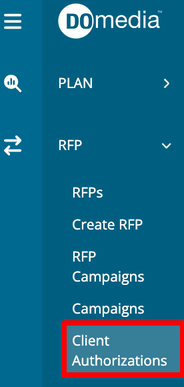
This is the Create Client Authorization page.
- Select the Campaign
- Name the Client Authorization
- Select any RFPs from which you would like data to be pulled
You're able to specify any markets that were present on the selected RFPs, as well as any Target Location Lists that may apply. Selecting a market will only pull in inventory in that market from the RFPs.
Client Authorization Terms (Campaign, Market, RFP) may be selected, but must be set up prior to creating the Client Authorization; you can see the specific terms by clicking the details link. These selections must remain synced with the RFP. To learn more on how to create Client Auths, check out this article here.
Additional Terms, Name, Target Location Lists, KMLs, and Comments will be editable fields if you need to go back and make revisions later.
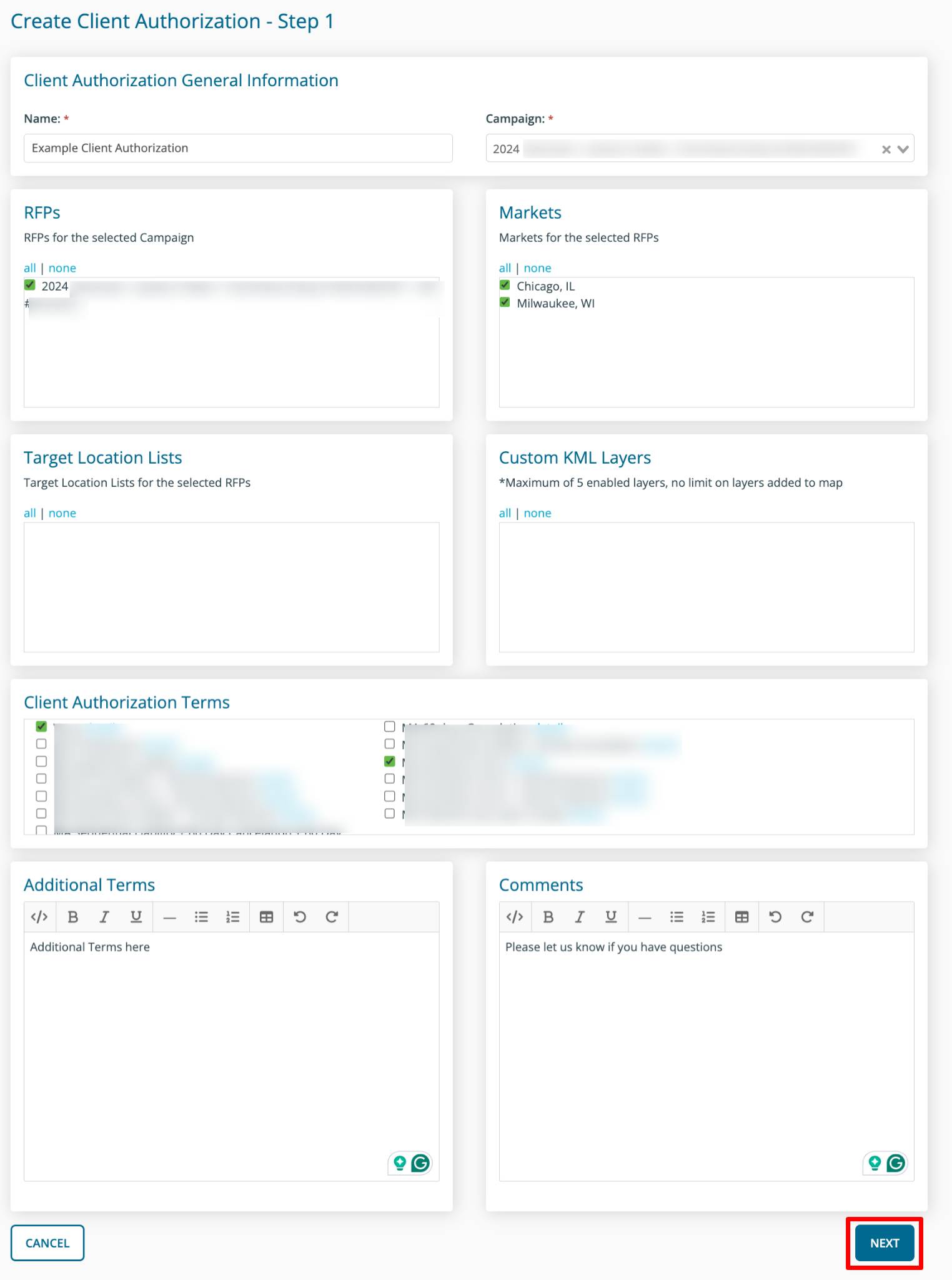
Once you click next at the bottom of the page, click "OK", to confirm the RFPs and Markets. After this, any necessary changes will require a new Client Authorization to be created.
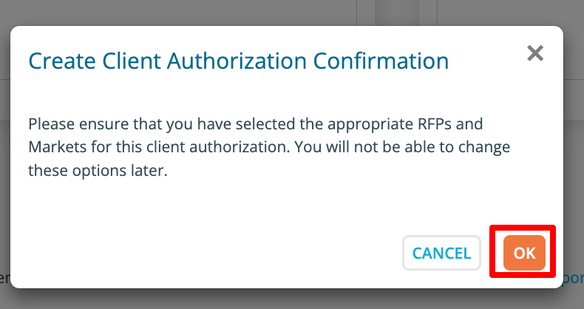
Step Two (Optional, Subject to Agency Permissions):
Select the column headers you wish to include on the Client Authorization. All column headers that can be included are on the left side (note that some columns are required and cannot be removed), and additional column headers that can be added are on the right. Click the blue arrows to add these headers. Any added columns will appear at the bottom of the list.
Some column headers will give the option to hide the column header from the client; those selections will all need to be set now and will not be able to be changed once you move past this page.
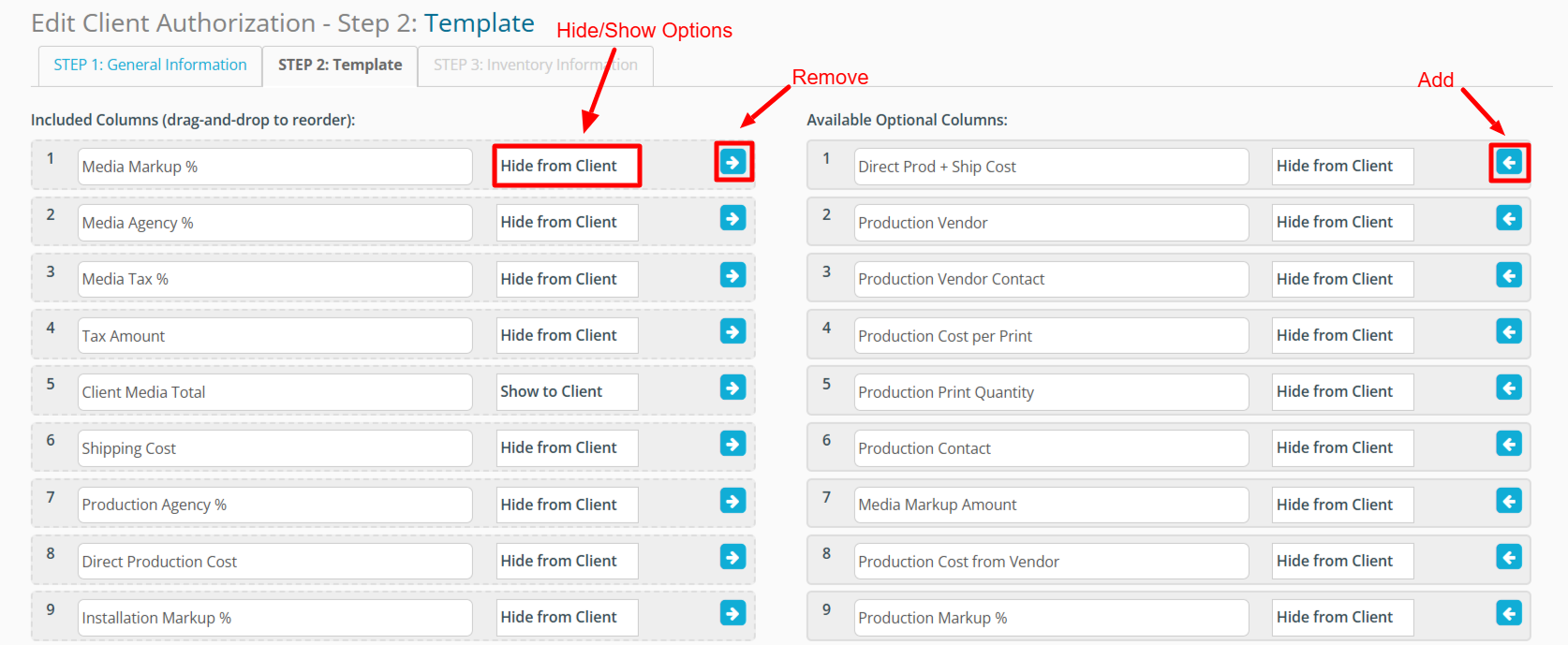
Scroll to the bottom and click Next to proceed. This will take you to Step 3: Inventory Information. It will pull in all of the included inventory information from the RFPs that you've selected. You can update the info in this grid now or later if you like. Please keep in mind that you cannot edit the RFP itself after the Client Authorization has been created. Any edits will need to take place in the Client Authorization after it has been issued.
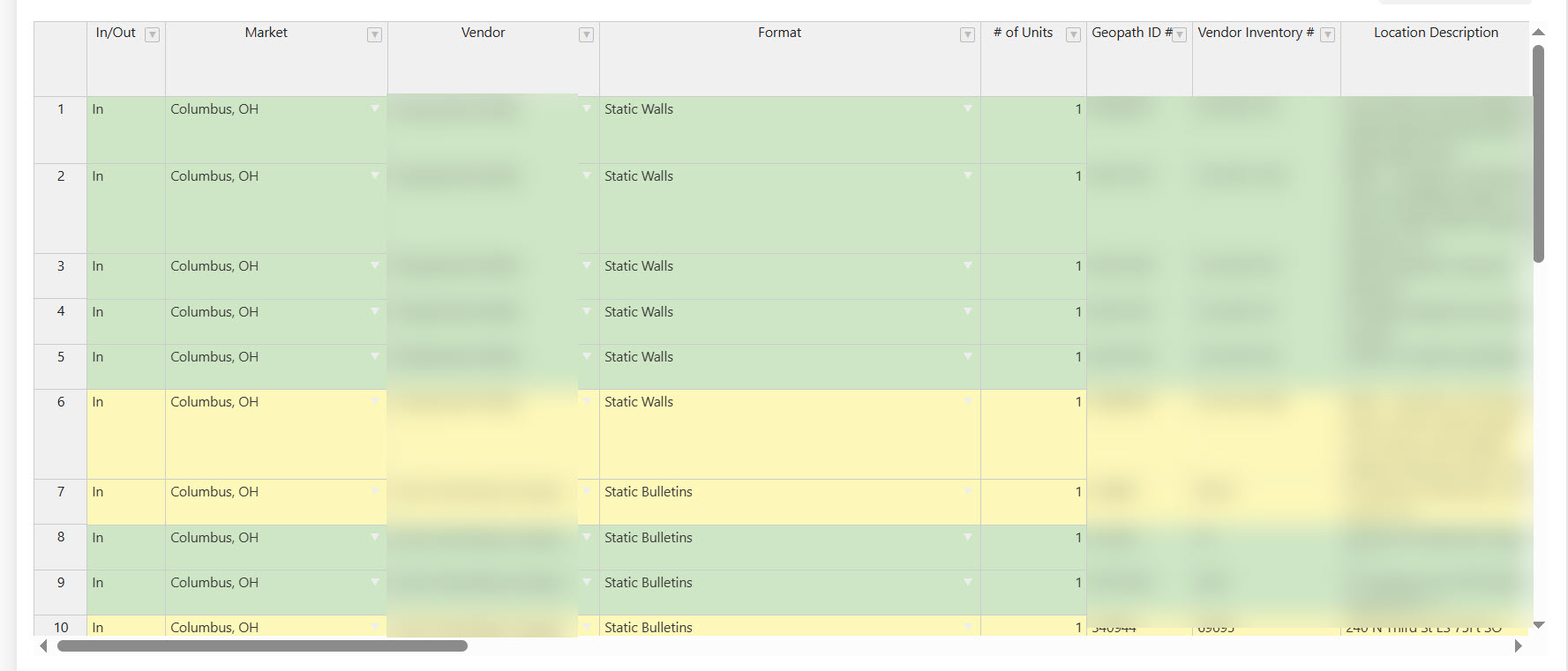
When everything looks good, scroll down and click Next to proceed. The Client Authorization is now created and will be in Draft status.
As mentioned, you will be able to update the Inventory Information via the Update Inventory button below (from Client Authorization page only). You can also view a larger map, as well as navigate directly back to the RFP(s) that were used to generate the Client Authorization.
By default, the Agency Fees at the top are set to be hidden -- this can be made visible to the client by clicking the corresponding link. The fees that appear are calculated based on the Total Client Cost minus the Net Media Cost for all cycles, Total Production Cost, and Installation Cost.
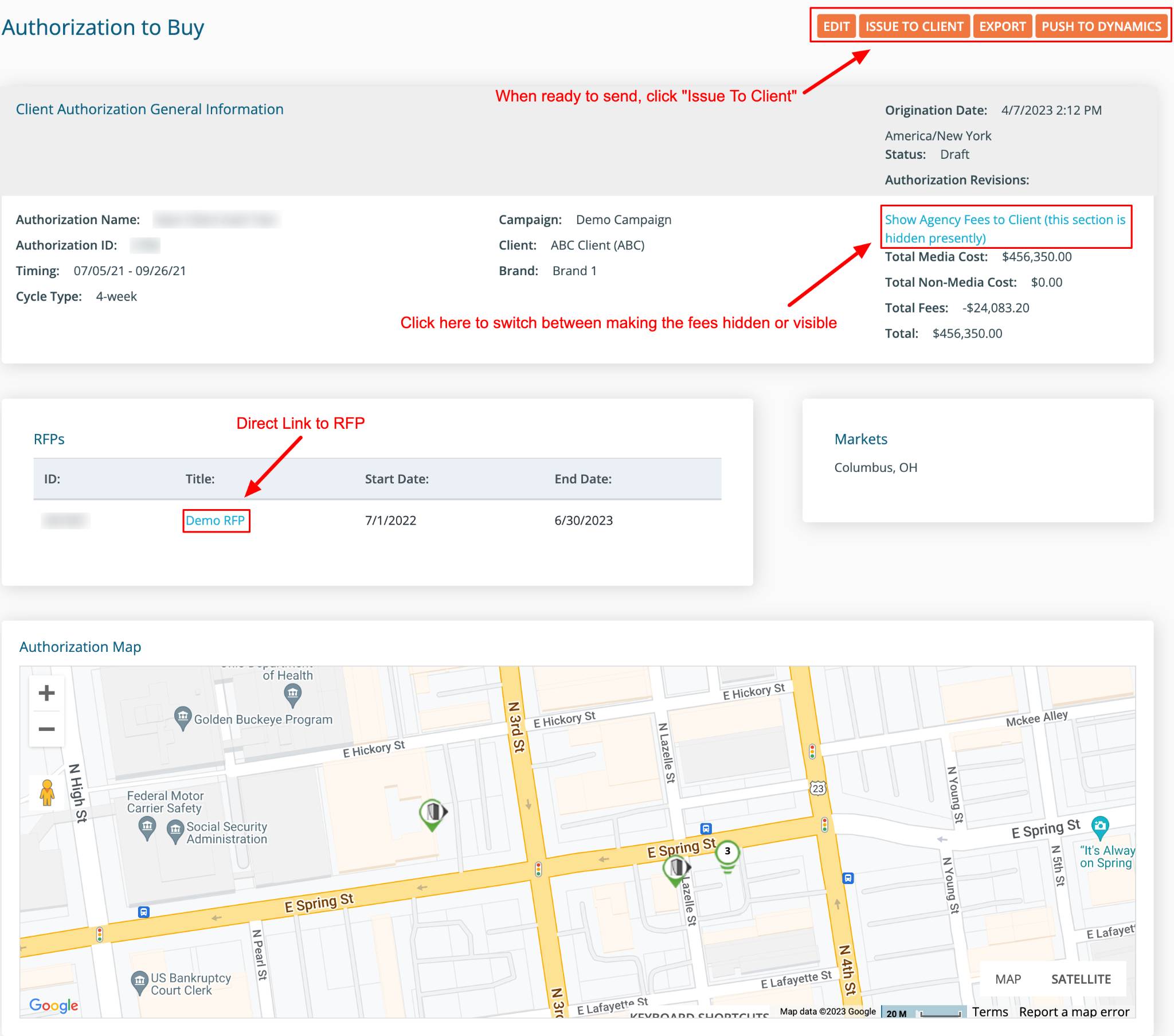
Under Inventory Information, you can "Update Inventory" and "Download" the data.
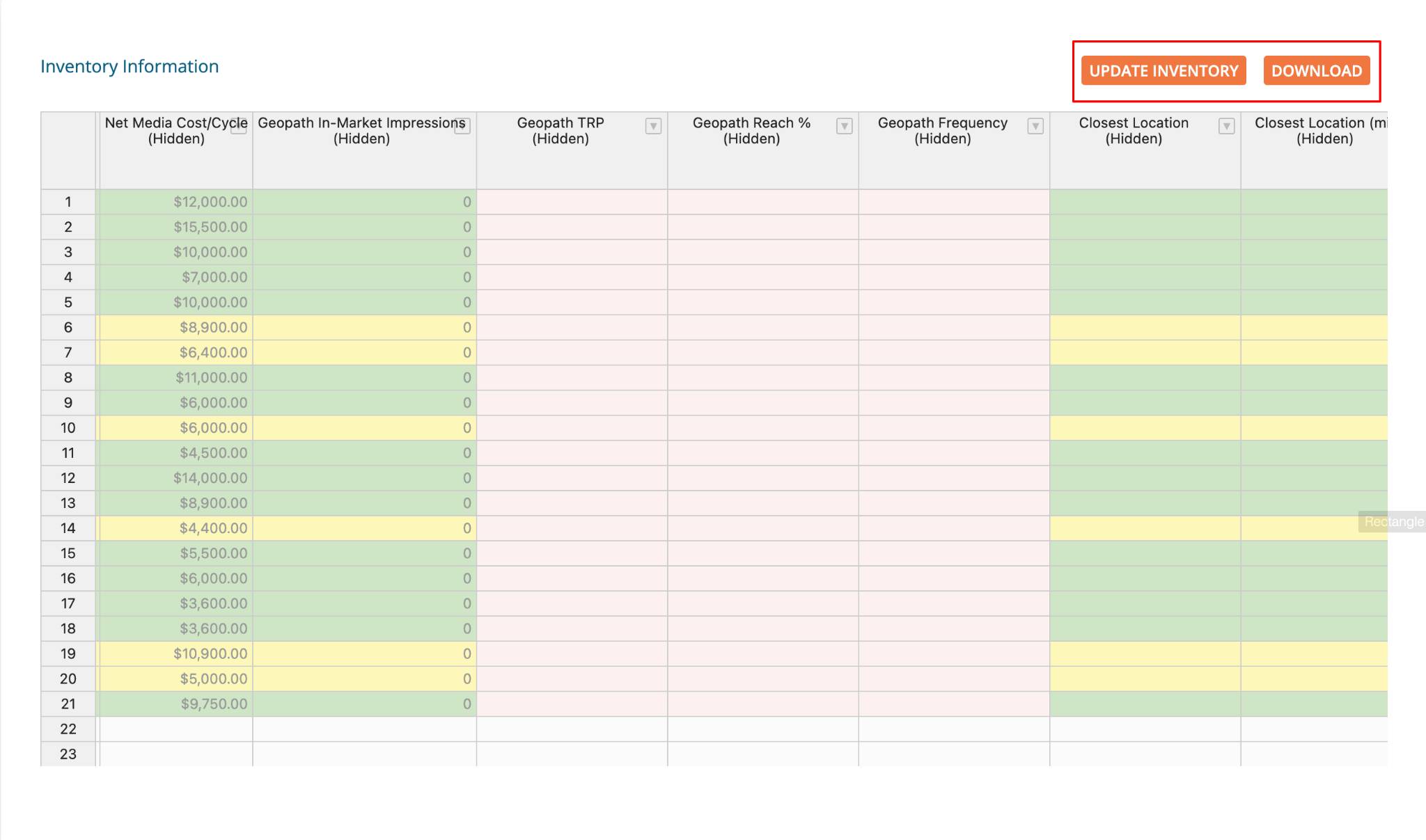
When you're ready to send this to your client, click the Issue to Client button. This will bring up a pop-up, where you will need to decide HOW to send this Client Authorization.
- Option 1: Issue Outside System
- This option allows you to simply copy a direct Client-facing link which you would send outside of the system (via email). Once you've copied the link, click Issue, and it will make the link live.
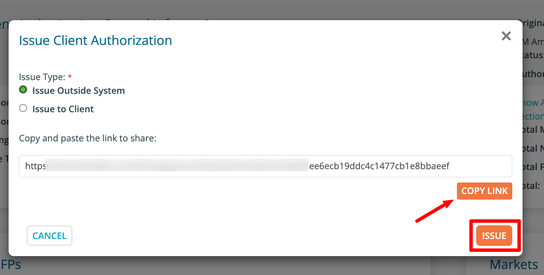
- Option 2: Issue to Client (directly from the system)
- This option allows you to input your client's email address, and then have the system send it directly to your client. You can add additional email addresses to issue it to multiple people at once.
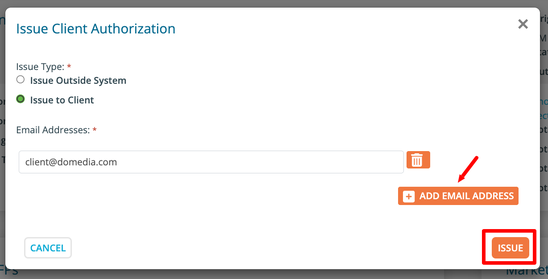
Once the Client Authorization has been issued, you will be brought back to the Client Authorization dashboard and will be met with a success message. The status will be updated to Issued.
If you need to get the link for your client again, click the Get Link button -- it will give you the link again to send out.
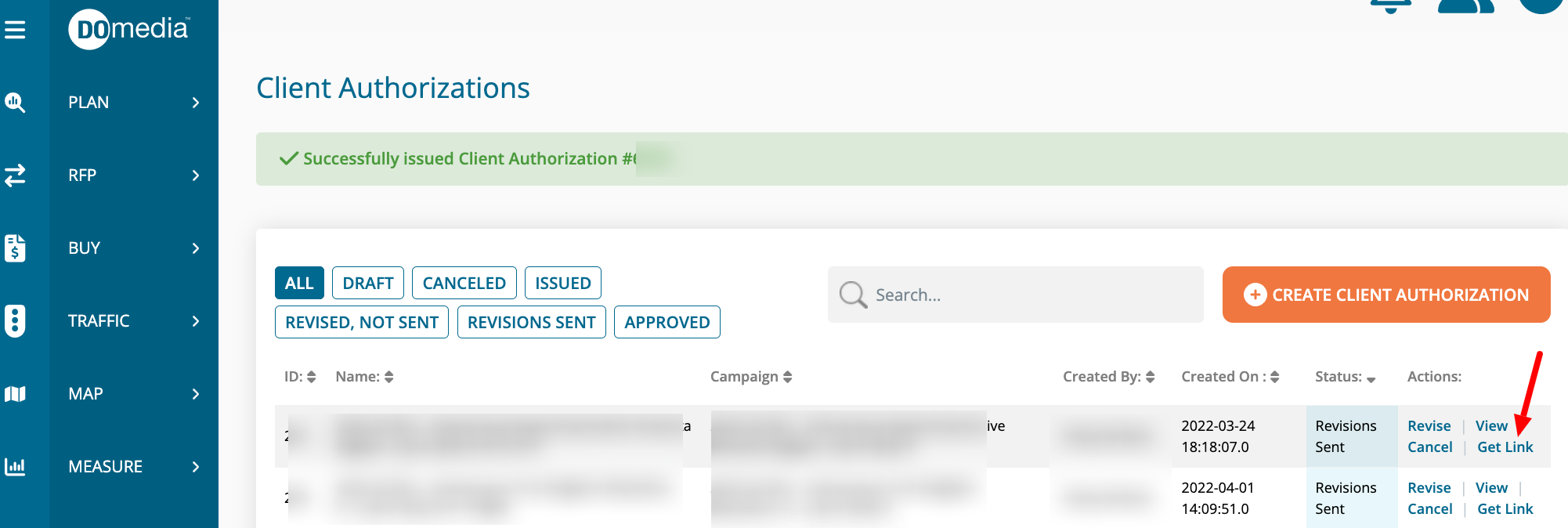
What will my clients see and do:
Now that the Client Authorization has been issued, your client can view and approve the Client Authorization! Below is what your client would see via the link they've received:


When your client is ready to approve they can click the approve button, and they will see this pop-up where they can sign that they approve it.
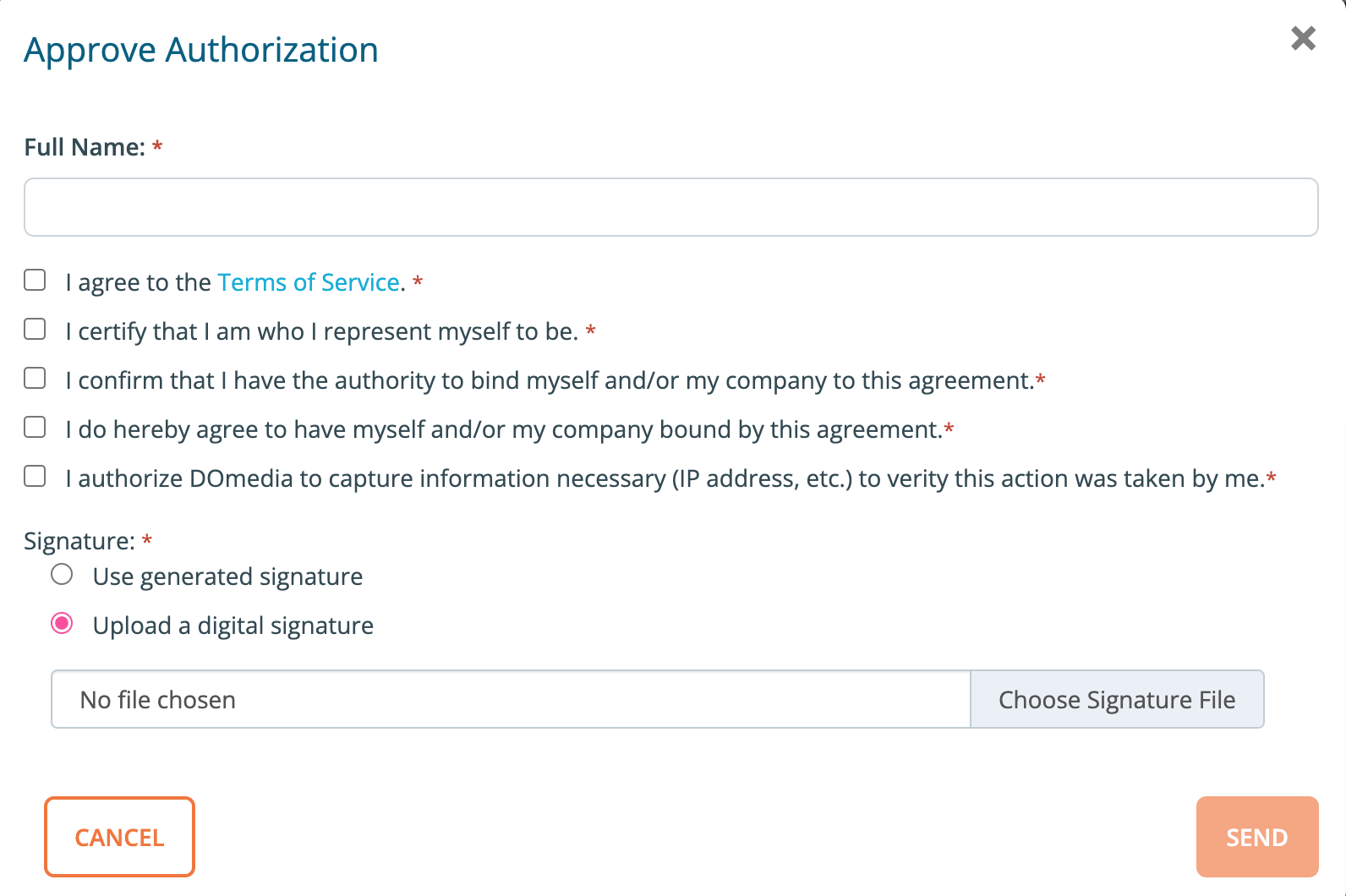
Once approved, the status will update to Approved. If you decide to export the Client Authorization, you will see the client's signature applied at the bottom.
